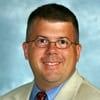Check out what is new in Pig Industry
Find the best technical articles, forums, and videos on Pig Industry at Engormix. Enter now and interact with the world's largest agricultural social network.
.mp4&w=3840&q=75)
Daniel Linhares (Iowa State University) shared his insights on indicators and methods for monitoring this disease, in this Swine It interview with host Laura Greiner....
Comments : 0
Recommendations: 0
.mp4&w=3840&q=75)
Ken Stalder (Iowa State University) talked about the different values taken into account, during this Swine It interview with host Laura Greiner....
Comments : 0
Recommendations: 0
.mp4&w=3840&q=75)
Wes Schweer (Zinpro) commented on organic acids, probiotics and combination of different products, during this Swine It interview with host Laura Greiner....
Comments : 1
Recommendations: 1
.mp4&w=3840&q=75)
Jay Johnson (USDA) talked about behavior and feed intake when monitoring possible heat stress, in this Swine It interview with host Laura Greiner....
Comments : 0
Recommendations: 0
.mp4&w=3840&q=75)
Daniel Linhares (Iowa State University) talked about virus detection and research results on PRRS outbreaks, in this Swine It interview with host Laura Greiner....
Comments : 0
Recommendations: 0
.mp4&w=3840&q=75)
Dan Columbus (Prairie Swine Centre and University of Saskatchewan) points out the importance of the diet regarding the ability to resist disease challenge, in this Swine It interview with host Laura Greiner....
Comments : 0
Recommendations: 0
...
Comments : 0
Recommendations: 0
1. Introduction The intestinal epithelium is a major interface with the outside world. This interface is separated from the body’s internal milieu by a single layer of epithelial cells consisting of absorptive enterocytes, goblet, enteroendocrine and Paneth cells. These cells are exposed, at the apical domain, to an external environment that is continuously changing by types and amounts of microorganisms, microbial products, gastrointestinal secretions and potentially...
Comments : 0
Recommendations: 0


Current market review and perspective of Florfenicol, Tilmicocin, vitamins and aminoacids
Suggested link
INTRODUCTION Mycotoxins are secondary metabolic products of fungi with toxigenic effects in other living species. Worldwide, about 88% of animal feed and feedstuffs are contaminated with at least one mycotoxin [1]. Fusarium toxins are the most prevalent, where deoxynivalenol ranks at first with 64% of occurrence, followed by fumonisins and zearalenone [1]. In pigs chronically fed deoxynivalenol contaminated diets, it is observed increased expression of interleukin 8 and...
Comments : 1
Recommendations: 0
1. Introduction The microbiota plays important roles on the maturation of the intestine and immune system and consequently affects the health of the host [1,2]. The physicochemical properties and the direct interaction with intestinal cells lead to a distinguishable composition of the microbiota along the gastrointestinal tract [3–5]. The microbiota in the intestinal lumen is more related to dietary compounds, whereas the mucosa-associated microbiota directly interacts...
Comments : 0
Recommendations: 0
Issues involving the environment, social and corporate governance in swine production will be highlighted at the event
With the theme "Pork production from an Agribusiness perspective", the sixth session of the IPVS2022 Pre-Congress, which takes place on June 21st at the RioCentro, Rio de Janeiro (RJ), will address issues involving environmental, social and corporate governance (ESG), as a link between science and the demands of the global...
Comments : 0
Recommendations: 0
.mp4&w=3840&q=75)
Let’s talk about Guanidinoacetic acid (GAA).Lukas Bauer, Manager Technical Consultancy for GuanAMINO® at Evonik Animal Nutrition, describes the Evonik’s customer experience using GuanAMINO® focusing on profitability and return on investment
...
Comments : 0
Recommendations: 4
Main text Porcine circovirus type 2 (PCV2) was first described in 1998 [1], and since then, it has become one of the most important pig pathogens, contributing to considerable economic losses by a syndrome called porcine circovirus disease (PCVD). The virus has demonstrated the highest evolution rate among similar DNA viruses, resulting in genetic shifts even over the rather short period of time since its recognition [2]. Today six genotypes of PCV2 are known, PCV2a-f [3]. PCV2d...
Comments : 0
Recommendations: 0
The intestinal morphology can be compromised in pigs when exposed to heat stress (HS), partly due to increased production of reactive-oxygen species. Because methionine (Met) functions as intracellular antioxidant, requirement of Met may be increased in HS-pigs. The effect of dietary supplementation with DL-Met above requirement on performance and serum concentration (SC) of free AA in HS-pigs was evaluated. A basal wheat-soybean meal diet was formulated to meet 100% Met requirement...
Comments : 0
Recommendations: 1
INTRODUCTION Antibiotics have given significant contributions to the human food production chain during their almost 80 years of use. Such contributions include a reduced incidence of bacterial disease, improved animal health status, and an overall enhancement in production efficiency (1, 2). However, due to concerns of antimicrobial resistance and its consequences to human health, the entire food-producing industry is under pressure to remove antibiotics from animal production...
Comments : 0
Recommendations: 0
Introduction Post-weaning diarrhoea ( PWD ) is a significant enteric disease causing considerable economic losses for the pig industry. Among several etiological risk factors, enterotoxigenic Escherichia coli ( ETEC ) is considered to be a major cause, i.e. colibacillosis. The use of antibiotics at subtherapeutic concentrations was routinely used as growth promoters for several decades, but has since 1 January 2006 been banned in the European Union due to the...
Comments : 1
Recommendations: 0
Introduction There are four forms of phytic acid (inositol hexakisphosphate, InsP 6 ), which have been identified in nature, myo, neo-, scyllo- and D-chiro-, that differ in their stereochemical conformation (Fig. S1) and association with metal ions as phytates in different soils (Turner et al., 2002). Among these, myo-inositol hexakisphosphate (InsP 6 ) garners the most attention from plant scientists. It is the principal storage form of phosphorus in plants,...
Comments : 1
Recommendations: 1
Introduction: Healthy pigs carrying Streptococcus (S.) suis on their tonsils are known to be a source of S. suis transmission in pig herds. S. suis can cause severe clinical disease, especially if co-infection with other pathogens occur. As a precautionary measure in experimental infection trials with other pathogens, pigs are treated with antibiotics to eliminate as much as potentially pathogenic bacteria as possible. The effect of cefquinome...
Comments : 0
Recommendations: 0


Current market review and perspective of Florfenicol, Tilmicocin, vitamins and aminoacids
Suggested link
Introduction: This abstract describes usage of antimicrobials in Finnish swine herds in 2014. Materials and Methods: In 2014 Finnish swine health program (Sikava) collected information from its system from 1282 pig herds. This data consists of 250 519 recordings from 1204 farms. Results: The most commonly administered antimicrobial was procaine benzylpenicillin. It´s active ingredient, benzylpenicillin, was used 1199 kg. The...
Comments : 0
Recommendations: 0
Introduction: Increasing antimicrobial resistance is one of the major problems concerning both veterinary medicine and human health. There are but few reports on antimicrobial susceptibility of C. perfringens from pigs. The aim of this study was to evaluate the susceptibility of porcine isolates of C. perfringens to antimicrobial agents commonly used in swine diseases therapy. Materials and Methods: A total of 159 C. perfringens...
Comments : 0
Recommendations: 0























